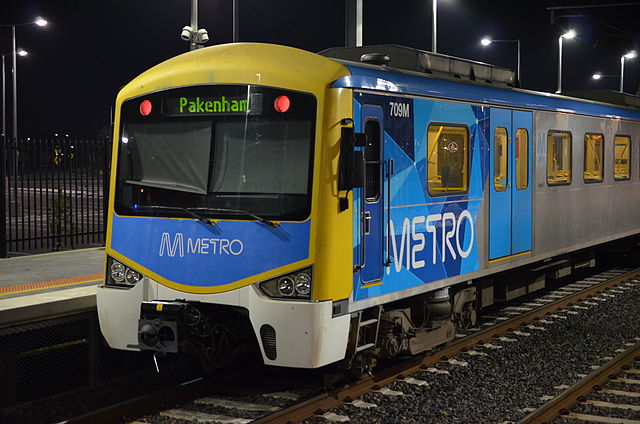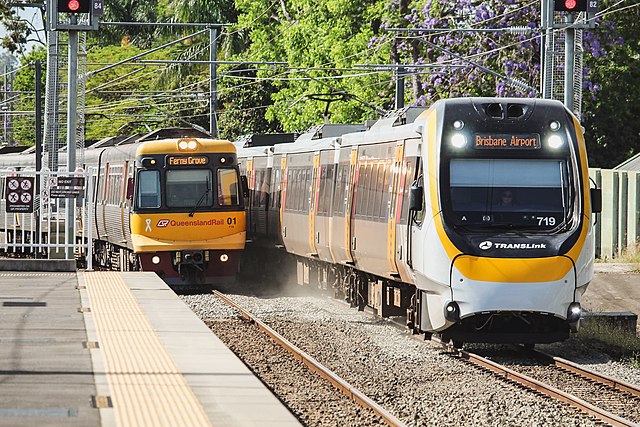There are many forms of transport in Australia. Australia is highly dependent on road transport. There are more than 300 airports with paved runways. Passenger rail transport includes widespread commuter networks in the major capital cities with more limited intercity and interstate networks. The Australian mining sector is reliant upon rail to transport its product to Australia's ports for export.
Eastern Freeway, Melbourne
Commuter train in Melbourne
Alstom Citadis and Bombardier Flexity Classic trams in Adelaide
A driverless Alstom Metropolis train on the Sydney Metro network
Rail transport in Australia
Rail transport in Australia is a component of the Australian transport system. It is to a large extent state-based, as each state largely has its own operations, with the interstate network being developed ever since Australia's federation in 1901. As of 2022, the Australian rail network consists of a total of 32,929 kilometres (20,461 mi) of track built to three major track gauges: 18,007 kilometres (11,189 mi) of standard gauge, 2,685 kilometres (1,668 mi) of broad gauge, and 11,914 kilometres (7,403 mi) of narrow gauge lines. Additionally, about 1,400 kilometres (870 mi) of 610 mm / 2 ft gauge lines support the sugar-cane industry. 3,488 kilometres (2,167 mi), around 11 percent of the Australian heavy railways network route-kilometres are electrified.
Passenger trains in Queensland
The Spirit of Progress press launch with locomotive S302 at Spencer Street station prior to the demonstration run to Geelong, in 1937
Australia's first railway train, 26 September 1855, in NSW
Looking along the Trans-Australian Railway








